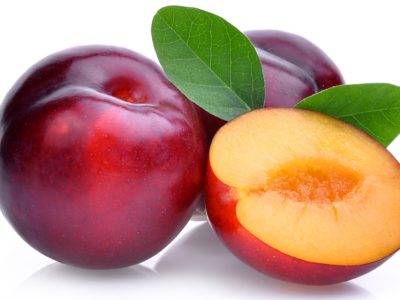Plums, scientifically termed Prunus domestica, stand as a fruit of remarkable versatility and flavor that has pleased palates for centuries. With their vibrant hues, succulent flesh, and sweet-tangy taste, plums have solidified their position as a cherished and adaptable fruit in the world of culinary pleasures. In this essay, we will delve into the origins, cultural importance, nutritional advantages, agricultural impact, and various culinary uses of plums, celebrating their exceptional role in the realm of fruits.
The history of plum cultivation can be traced back thousands of years to regions in Asia, particularly China and Persia (modern-day Iran). In ancient China, plums held high esteem, linked to fertility and featured in Chinese literature and poetry. The cultivation of plums gradually extended to Europe, where they symbolized good fortune and became integral to diverse culinary traditions.
Culturally, plums have played pivotal roles in societies worldwide. In Japan, plums signify purity and hold a special place in cultural celebrations, notably the plum blossom festival, known as "ume matsuri." The Japanese plum, or ume, is employed to craft plum wine, plum vinegar, and umeboshi (pickled plums), all laden with cultural significance.
In European folklore and fairy tales, plums have been celebrated, even playing a role in stories like "The Frog Prince." Beyond symbolism, plums have been a staple in European cuisine, finding their way into jams, preserves, tarts, and brandies.
Nutritionally, plums offer a wealth of health benefits, being low in calories and high in water content, making them a hydrating and guilt-free snack. They also supply essential vitamins (C and K), potassium, and dietary fiber. Vitamin C bolsters the immune system and skin health, while vitamin K aids in blood clotting and bone health. Potassium helps maintain proper blood pressure and muscle function, while dietary fiber aids digestion, weight management, and stable blood sugar levels.
Notably, plums are recognized for their sweet-tart profile, featuring natural sugars like glucose, fructose, and sucrose, which create a complex and delightful flavor, blending sweetness with a hint of acidity. This distinctive taste makes plums a versatile ingredient for sweet and savory dishes alike.
The culinary adaptability of plums underscores their appeal. They can be savored fresh, dried (prunes), canned, or employed in a myriad of recipes. Fresh plums serve as a delectable and wholesome snack, delivering a burst of flavor and juiciness. They are also a popular inclusion in fruit salads, offering a sweet-tart contrast to other fruits.
Dried plums, or prunes, are known for their nutrient density and fiber content, often recommended for digestive health. Prunes can be consumed as a standalone snack or integrated into baking to infuse natural sweetness and moisture into recipes such as muffins and bread.
Plums find favor in producing jams, jellies, and preserves. Plum preserves, simmered with sugar and sometimes enhanced with spices or citrus, capture the essence of the fruit's flavor and serve as delightful toppings for toast, biscuits, or desserts.
One of the standout applications of plums is in desserts. Plum tarts, with their buttery pastry and luscious plum filling, epitomize the fruit's sweet-tart allure. Plum cakes, studded with fresh or dried plums, offer a delightful and moist treat. The French dessert, plum clafoutis, showcases plums baked in a custard-like batter, creating a rustic and comforting dish.
Moreover, plums shine as a versatile ingredient in savory dishes, pairing seamlessly with proteins like duck, pork, and chicken. Plum sauces, often prepared by simmering plums with vinegar, sugar, and spices, yield sweet and tangy glazes for meats and poultry.
From an agricultural viewpoint, plum cultivation is a significant industry in various regions globally, with China, the United States, and Europe emerging as key producers. Plum trees thrive in temperate climates and necessitate prudent pruning and care to ensure fruit quality. Sustainable farming methods, such as organic cultivation and integrated pest management, aim to reduce the environmental impact of plum production while endorsing soil health and biodiversity.
In conclusion, plums, distinguished by their rich history, cultural prominence, nutritional merits, agricultural influence, and diverse culinary applications, epitomize a fruit that continually captivates our senses and defines the essence of gastronomic pleasure. Their sweet-tart flavor, vibrant colors, and juiciness encapsulate both indulgence and well-being. Whether relished freshly plucked from the tree, artfully baked into sumptuous desserts, or transformed into savory sauces, plums persist as a cherished and iconic fruit, beckoning us to relish the delights of sweetness with a hint of tang.


